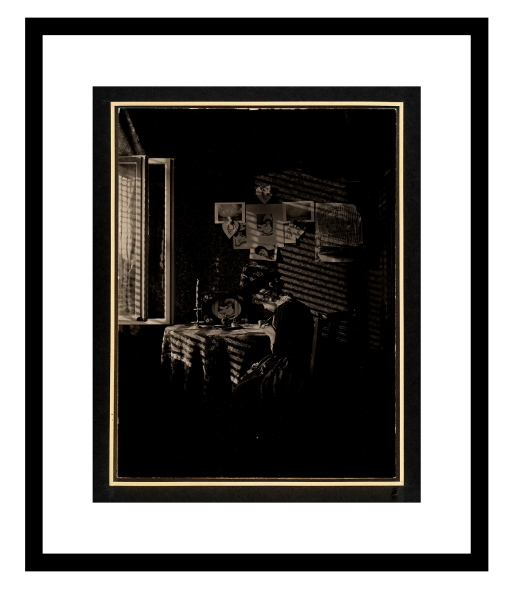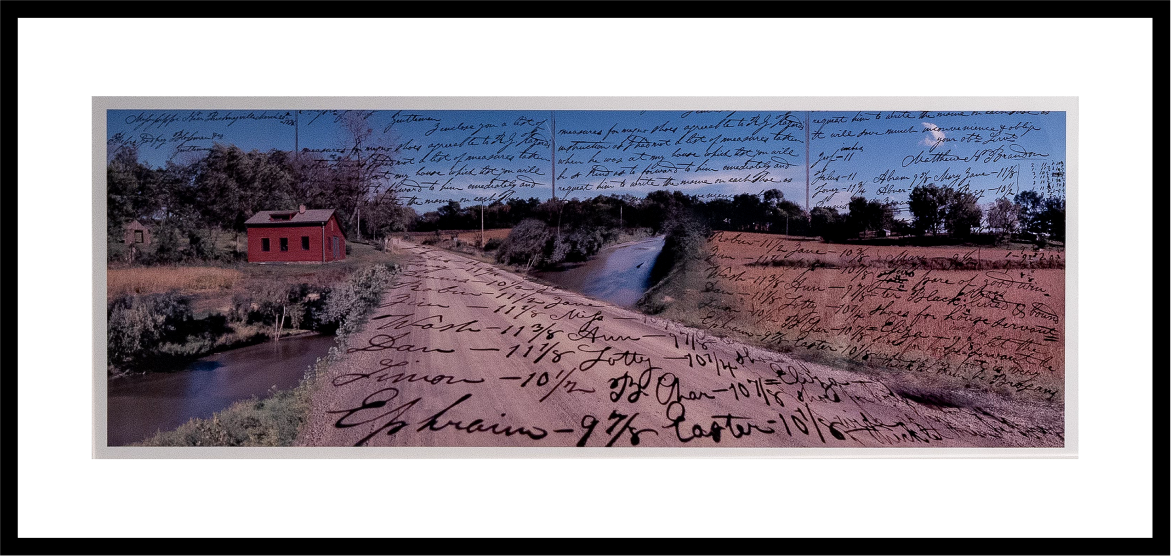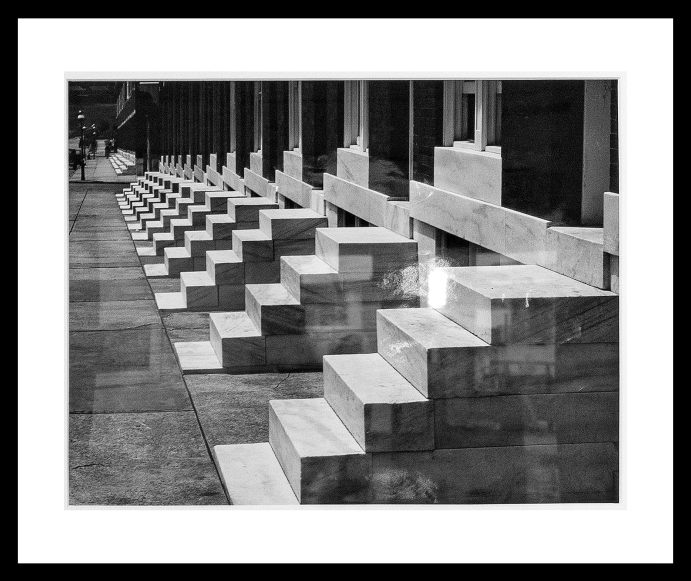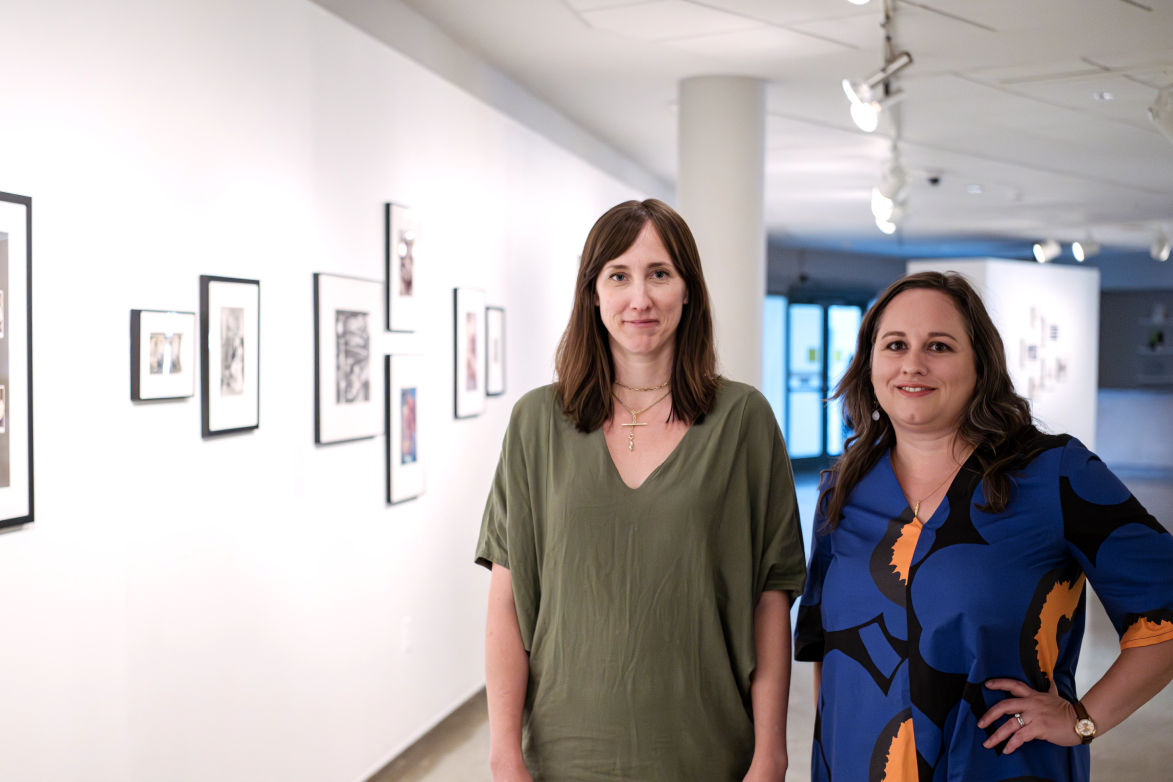Walking into the Albin O. Kuhn Library Gallery, you always know you’re going to see some well-curated photos and works of art, but the trove of images currently on the walls for Revisions: Celebrating 50 Years of the UMBC Photography Collections (closes December 15) are assembled as an remarkable representational sample of the nearly 3 million images that make up the UMBC archive.
Known today as one of the country’s premiere university collections of photographs, the Photography Collections had a modest but auspicious beginning. In 1974, the Baltimore lithographer and photographer Edward Bafford donated to UMBC Special Collections a remarkable early image by Arthur Stieglitz (1864–1946), a photographer widely credited with helping transform photography into a serious art form. Bafford’s gift coincided with the foundational purchase of more than 5,400 photographs by labor activist Lewis Hine that documented horrific child labor practices.
Over time, the Photography Collections at UMBC have expanded through purchases and gifts. One special acquisition stands out for its regional importance: In 2014, the collection received the photo archives of the Baltimore Sun, including more than 750,000 prints, negatives, and transparencies from the 1930s through the 1980s.
Housed in the Special Collections department of the Library, the collections are open to the public, and are widely used by scholars and photographers. An increasing number of images have been digitized for online viewing, available through the Library’s website.
Looking back at a half-century of collecting, the exhibition offered thematic groupings and visual juxtapositions of photographs from the nineteenth century to the present. Co-curated by Beth Saunders, curator and head of Special Collections, and Emily Hauver ’06, curator of the Albin O. Kuhn Library Gallery, Revisions asked viewers to approach the history of photography with fresh eyes. In this photo essay, Hauver offers her thoughts on a few stand-out images in the show.
Sun Rays—Paula, Berlin, 1889
Sun Rays-Paula, Berlin is a particularly apt founding image for a university collection; it was made when the great Steiglitz was himself a student, and could thus be viewed as a symbol of the endurance of formative educational experiences on the making of an individual’s personal and professional identity. UMBC’s Photography Collections were conceived of as a teaching tool through which budding photographers enrolled at the university can contemplate the elements of successful photographs through the close study of master prints.
Alfred Stieglitz (American, 1864–1946), Sun Rays—Paula, Berlin, 1889. Gelatin silver print, 1929. Gift of Edward Bafford, P74-07-001.


[Nishnabotna Ferry House], ca. 2001–2008
Stephen Marc, American, born 1954, [Nishnabotna Ferry House], ca. 2001–2008. Inkjet print. Stephen Marc Collection, Coll353-P001.
Bringing the past palpably into the present, this photograph by Stephen Marc utilizes digital montage to weave together elements from the landscape of slavery—in this case a site associated with the Underground Railroad, the Nishnabotna Ferry House, and an 1836 letter from a Mississippi slaveholder ordering shoes for the people he enslaved. The names of the enslaved, which appear to be marching along the path to freedom and a better future, memorialize both the individuals held captive and those who succeeded in escaping.

Ralph Gibson (American, born 1939), Elba, c.1983. Gelatin silver print. Gift of Carol A. Merritt, P93-14-004.
Ship Island, Miss. & 74th U.S. Colored Infantry, c. 1864
This composition comprises several photographs of Black Union soldiers and white officers and is embellished with hand-drawn elements. Posing for portraits during the Civil War— the first major conflict to be extensively documented through photography—allowed Black men to assert their newfound identity and freedom as soldiers. The person who made this composition sought to memorialize the patriotism of Black soldiers through the visual image, showcasing the commitment of these men to fight for their own liberation. The fact that the embellishments are incomplete draw a poignant, if unintentional, parallel to the unfinished business of achieving true racial equality in this country.


John Waters, 2013
What could be more “Baltimore” than John Waters? In this image, taken by Sam Holden, a Baltimore-based photographer who tragically passed away at the age of 44 in 2019, the filmmaker grins impishly at the camera while posing with a cherry pie.
Sam Holden (American, 1970–2014), John Waters, 2013. Cross processed chromogenic print. Sam Holden Collection, Coll255_IA-001.


Marble Steps, 1954
Row after row of white marble steps for which the city of Baltimore is famous are seen in this photograph by Aubrey Bodine, one of Maryland’s best-known photographers. The geometry and contrasting tones of the steps pair with Bodine’s meticulous composition to manipulate the viewer’s perception by drawing the eye down the block and giving the impression of depth that defies the flat surface of this photograph.
A. Aubrey Bodine (American, 1906–1970), Marble Steps, 1954. Gelatin silver print. Gift of Mrs. A. Aubrey Bodine, P86-19-032.
Ward 81, Oregon State Hospital, Salem, Oregon, 1976
This photograph by Mary Ellen Mark flips the typical script of looking at a photograph wherein the observer looks upon a passive subject. Here, the photograph appears to be looking back. Despite the visual distortion caused by the screen covering the door’s small window, the power of this woman’s gaze implores us to make a connection, challenging us to engage on a deeper level with her and, perhaps, with ourselves. It’s made all the more compelling knowing that it was taken on Ward 81, a women’s security ward of the Oregon State Mental Institution.

Mary Ellen Mark (American, 1940–2015), Ward 81, Oregon State Hospital, Salem, Oregon, 1976. Gelatin silver print. Gift of Andrew Cahan, P2013-32-001.

Boy and dog, c. 1870s
Our collections hold thousands of images of anonymous people. Here, a small tintype shows an unusual pairing—a Black boy with a dog—framed in a case. We don’t know his name or where the photo was taken, but we can date this image to the 1870s. As we gaze back into his eyes, we wonder: Who was he? What was his story?
Unidentified photographer, Boy and dog, c. 1870s. Tintype. Library purchase, P78-120-006.
Elba, c.1983
Mirrors, with which photographs have long been metaphorically compared, offer opportunities to extend the narrative possibilities of a photograph beyond what is in front of the camera to what is behind, beside and beyond. This photograph by Ralph Gibson is compelling because it elicits conflicting reactions at once: comfort with the familiarity of the subjects (a nose, mouth, hand, landscape) and unease with the disjointed way they have been assembled.
Unidentified photographer, Boy and dog, c. 1870s. Tintype. Library purchase, P78-120-006


Emily Hauver ’06, curator of the Albin O. Kuhn Library Gallery, and Beth Saunders, curator and head of Special Collections, worked together to comb through the university’s extensive collections to display a stunning representation of what is available in the archives.
By Emily Hauver ’06 and Thomas Moore
Tags: AOK Library Gallery, Fall 2024, Feature, Photography collections

